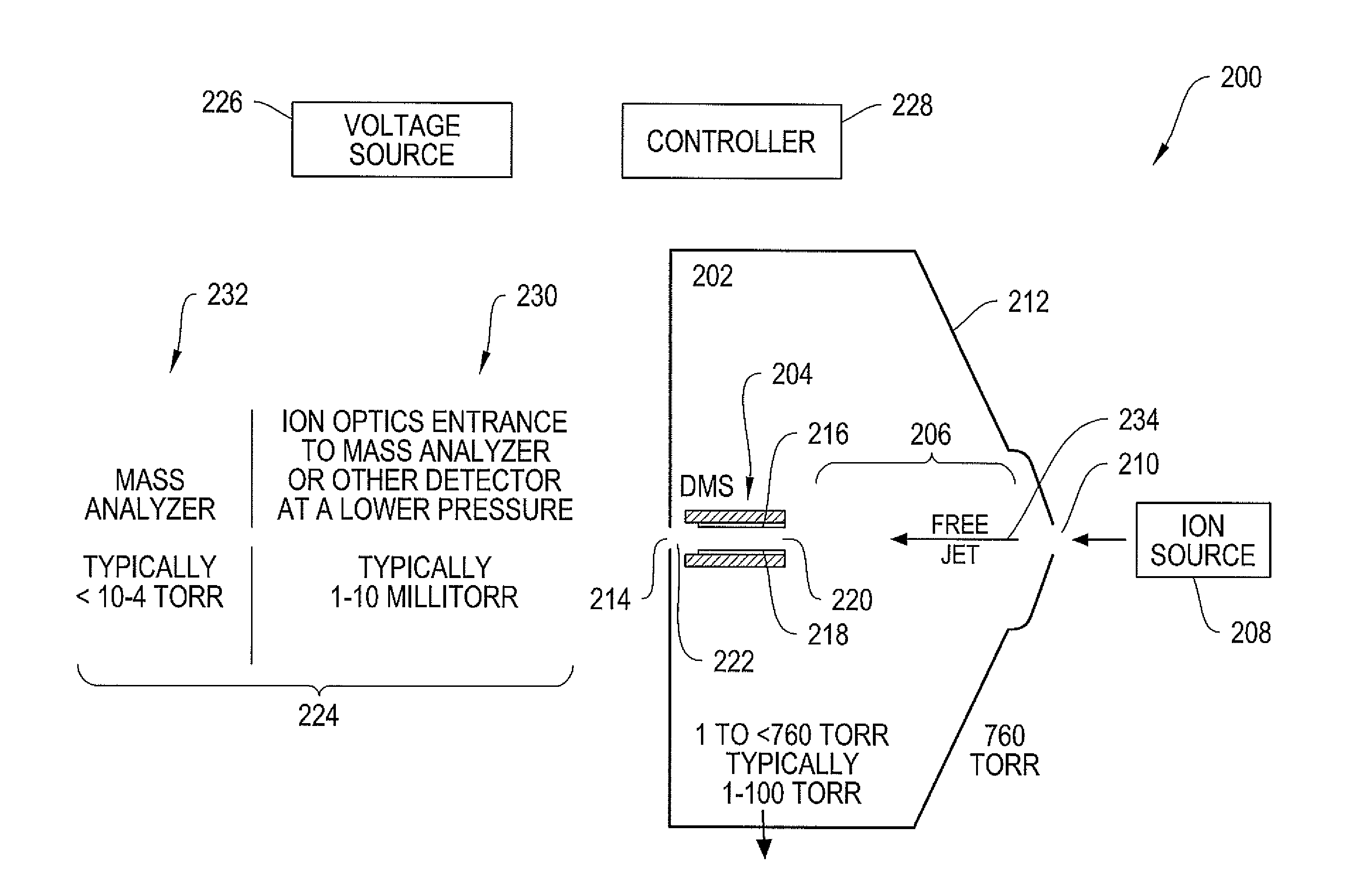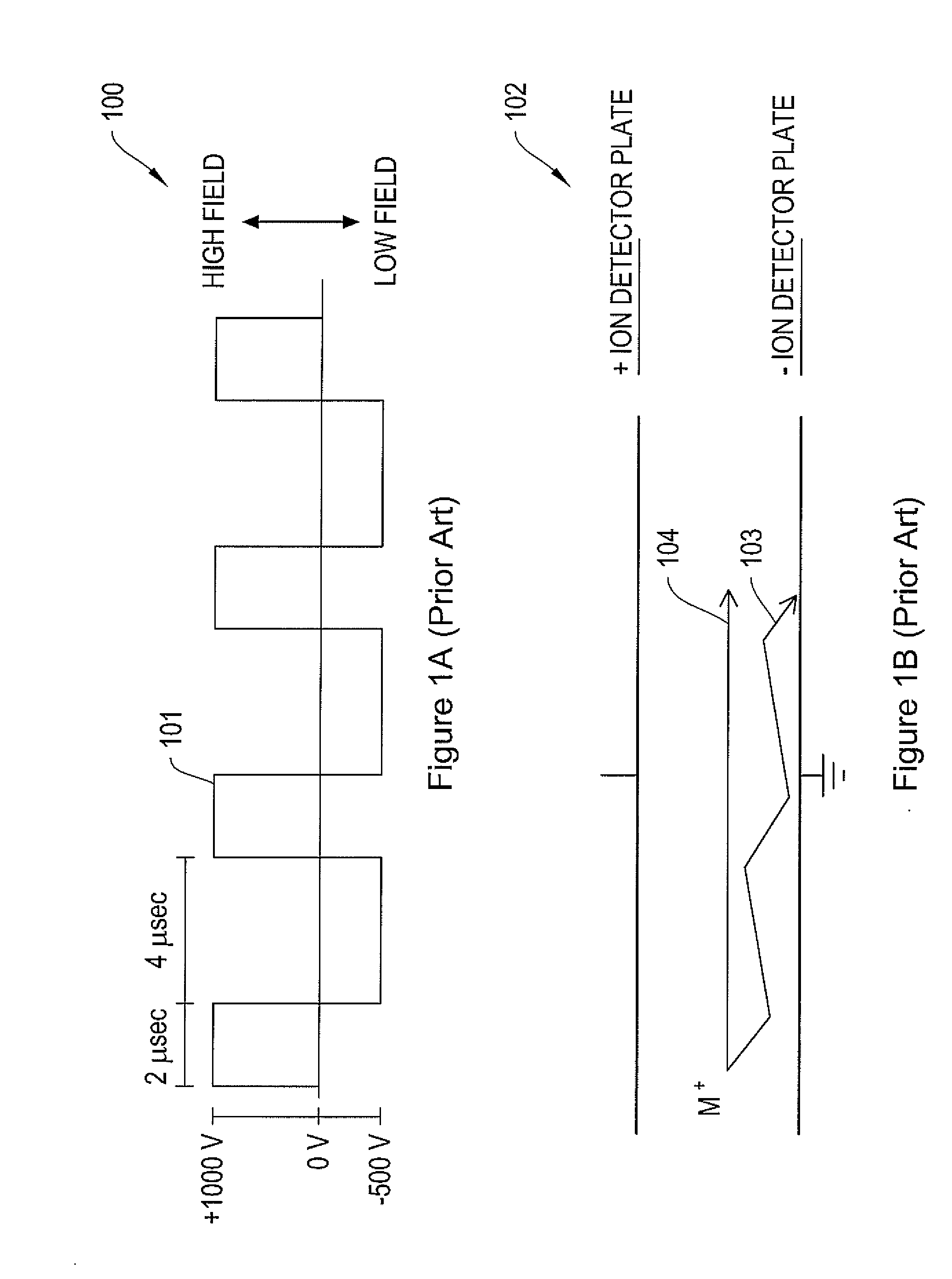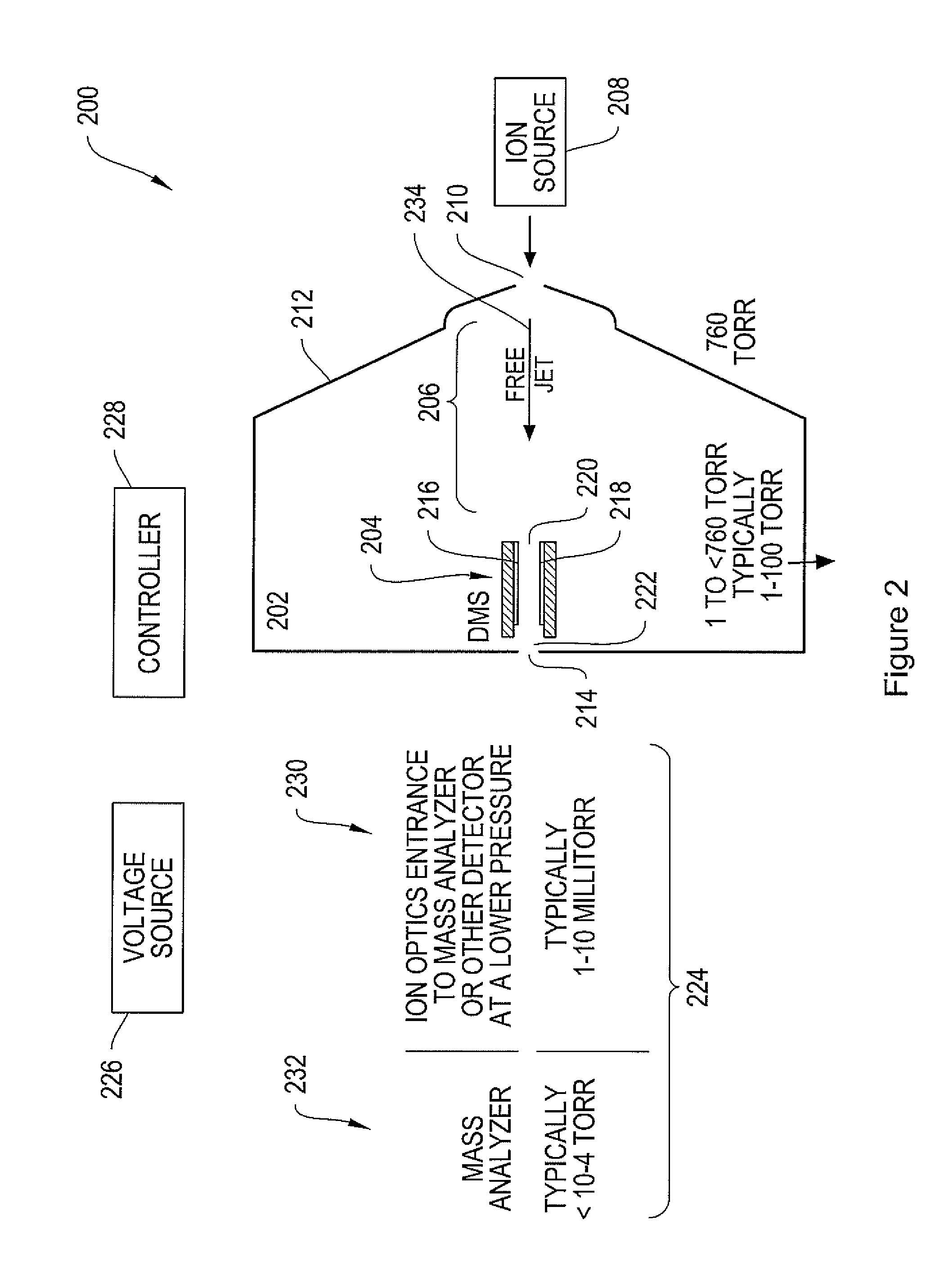Mass analysis system with low pressure differential mobility spectrometer
a mobility spectrometer and mass analysis technology, applied in mass spectrometers, isotope separation, particle separator tubes, etc., can solve the problems of reducing the sensitivity of the instrument observed upon installation of the dms, eliminating the ability to decluster, and reducing the sensitivity of the dms, so as to improve the applicability of dms-ms analysis, improve the mobility based resolution and specificity, and improve the sensitivity and selectivity
- Summary
- Abstract
- Description
- Claims
- Application Information
AI Technical Summary
Benefits of technology
Problems solved by technology
Method used
Image
Examples
Embodiment Construction
[0043]While the applicant's teachings are described in conjunction with various embodiments, it is not intended that the applicant's teachings be limited to such embodiments. On the contrary, the applicant's teachings encompass various alternatives, modifications, and equivalents, as will be appreciated by those of skill in the art.
[0044]A common problem with electrospray ionization sources is that they typically produce heterogeneous ion clusters that can adversely affect the resolution of ion analyzer systems. Clustering of ions and neutral gas phase molecules typically results from ionization at atmospheric pressure. Ions generated during the electrospray process are a combination of bare molecular ions and ions clustered or contained in small droplets of the electrospray solvent. The relative proportion of ions, ion-clusters, and charged droplets is highly dependent on the degree to which the charged nebulized liquid is desolvated.
[0045]When a mobility based analyzer, such as a ...
PUM
 Login to View More
Login to View More Abstract
Description
Claims
Application Information
 Login to View More
Login to View More - R&D
- Intellectual Property
- Life Sciences
- Materials
- Tech Scout
- Unparalleled Data Quality
- Higher Quality Content
- 60% Fewer Hallucinations
Browse by: Latest US Patents, China's latest patents, Technical Efficacy Thesaurus, Application Domain, Technology Topic, Popular Technical Reports.
© 2025 PatSnap. All rights reserved.Legal|Privacy policy|Modern Slavery Act Transparency Statement|Sitemap|About US| Contact US: help@patsnap.com



